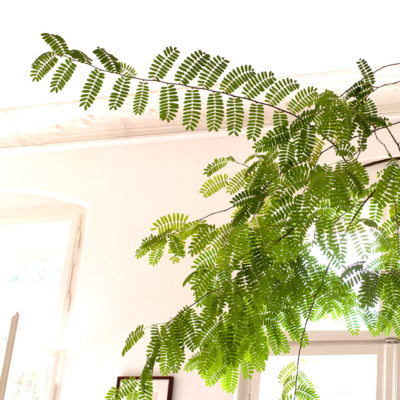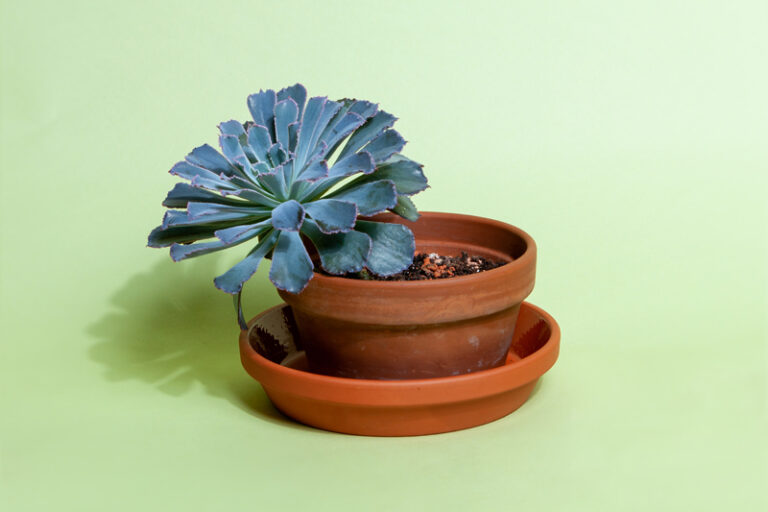
Graphic designer Krittika Arvind lives in West Berlin, together with her husband. She gives lost plants a second chance. FYTA sat down with Krittika to talk about her relationship with plants. Plus, she shares one of her delicious curry recipes with us!
Krittika is a plant-saver. Her home is filled with sprouts waiting to grow. She talks to them, draws them, uses them for cooking. Her apartment smells of curry, a Madagascar jewel is making a plopp sound with every seed it is dropping in the room and a blooming Hoya has found its way through a cheese grater. Good vibes.
FYTA: Plants get abandoned fairly often, because we’re still treating them mainly as objects. You are one of the people who rescue these plants.
Krittika Arvind: Yes, one could say I am suffering from obsessive rescue-disorder (laughs). When I see a plant which can be saved I take it with me.
How do you decide whether a plant needs saving?
It’s a gut feeling. The first plants I rescued I got at a Tree Blossoming festival. While everyone was fascinated by the blossoms and kept staring up at them, I noticed small plants sitting on the side of the road which were being trampled on and uprooted. I thought to myself, those are really beautiful. I wrapped them in a wet shirt and took them home. And they are growing back every year, all by themselves, they are green, low maintenance and local! Just perfect!
Which other plants have you rescued?
I rescue all kinds of plants, even weeds. The birds are leaving many gifts for me on my balcony. I just let everything grow there, until I can tell what it is going to be. Sometimes I find a new home for the sprouts, sometimes they do go into the organic waste bin. Then I tell them: you’ll be back one day, but for now you’ll be helping the organic waste.
"Being reborn as a plant means leading a life without eagerness or ambition.”


There is the idea of reincarnation in Hinduism as well as in Buddhism. Could you imagine being reborn as a plant?
I used to concern myself a lot with Tibetan beliefs surrounding the Dalai Lama, and I have even met him! I was told that being reborn as a plant means leading a life without eagerness or ambition. That sounds very soothing to me. It would be like getting the pay off for the busy life I lived before.
Where are your own roots?
By now, here in Berlin. I come from South India, and grew up in Hyderabad and Bangalore. As a child I would always wear a type of tiny sunflower in my hair – my cheerful companion. I stayed in Bangalore in order to study fine arts. The Campus was amazing by the way. In the 40s and 50s one would take their classes outdoors, underneath huge trees. And they survived until today. In London I met my husband at the end of his Erasmus semester. Together we moved to Berlin.
You got to know many cultural influences – have you noticed differences in the relationship with plants?
In India, having plants at home and being fascinated by them was just part of our lives. Everyone had plants, indoors and outside. Some people would collect expensive orchids, or special types of cacti, for which they had to import care products from overseas. It was almost cult-like, a bit scary. In Germany, these weird trends keep popping up. For a while everyone would buy „Rio Pink“ from Brazil and I would think, oh god, please not again. I keep telling people, please don’t buy seeds or plants for me, but give me cuttings from your own ones. Or seeds of special plants which I can watch growing.
WHEN THE WIND BRINGS YOU PLANTS AS A PRESENT


Where are you getting your plants from?
Many of them I am just letting grow from seeds, for instance my Tamarind, Sapote or the citrus tree. Some I get in small shops, where I also gladly take the remainers. Many I stumble upon while traveling, the underdog-plants (laughs). I was always longing for a type of grass my neighbor had, but I never dared to ask her about it. Then one day, the wind would bring it to me as a present. It must have been telepathy.
Do you believe that plants communicate?
Sure. I watched the documentary The secret life of plants by David Attenborough. There he explains that plants communicate through pheromones. If a plant is infected, it can warn the others about it. And if one is emitting more CO2, the other one will produce more oxygen! And the plants in my apartment live in a community as well. I always notice this when I rearrange them. In some constellations they are super happy and one is growing 5 cm in one week. Then I think: ok, these two really like each other!


How do you maintain your plants? How often do you water them?
I check on them every or every other day and take a look if the soil is dry, or if the potting mix needs to be loosened. And I always also check the backs of the leaves in order to see if lice or spiders have moved in. I learned over time, through my experiences, how plants behave. Somehow they manage to communicate what they need.
Which one of your plants has the most interesting story?
Or maybe the longest journey? Here we have Ivy-aunty…
…you call her ‚ivy-aunty‘?
Yes (laughs). In India, we call Ladies we are not on first name terms with, “Auntie” in a respectful way. My Auntie is the oldest here. We got her from an old gardening shop. She was about three years old then and is with me for over ten years now. When she was growing I would tell her: don’t climb on the oven. And I have the impression she is listening to me! But when she is getting too big, I cut her down and give the cuttings to friends. The branches I give to flower shops for them to use as decorations. But only one shop appreciated it. The others thought I was a bit nuts (laughs).
"Plants reflect my State Of Being"


Do you do indoor farming, too?
Yes, a bit. I have my curry-leave-tree, which is very important for the South Indian cuisine. I also have several types of mint. Moroccan mint, for instance, from a walk in Brandenburg. There it grows everywhere! Other than that I have tomatoes, garlic, sorrel, strawberries…and basil in the kitchen.
And what is the deal with the cooking and the plants? Do you stick to recipes or do you just go with your instinct?
I go with nostalgia. I cook dishes I know from my or Markus‘ grandma, or according to my color mood. This way I get to combine my ingredients and enjoy cooking and it relaxes me. I take a lot of time and always just one ingredient. If it is chard, I look at it carefully. It has something tender and stem-like and the dish has to communicate that.
In your illustrations, one can see your close relationship with plants shining through.
These personal pieces reflect my thoughts. I don’t plan them from the beginning to the end. I start by making a little dot or a streak and let it grow in a generative way, like plants. My thoughts work the same way. In the beginning I don’t know what it is going to be. And in the end one can recognize certain plants if they look for them. I always leave my pictures open for interpretation.
How would you describe your relationship with plants?
The plants reflect my state of being, because I can tell from looking at them how I feel. If I am not well, I neglect them. And they, in return, show me that something isn’t right. When they all look happy I am in balance, too. They are some sort of motivational coaches for me.
Krittika, what does your own name actually mean?
My uncle read in a magazine, that this was the name given to a stellar constellation which was discovered by a South Indian Astrologist. So Krittika is a star!


Krittika's Chard in Coconut Curry
Ingredients:
- approx. 15 leaves of chard, without the stems
- 2-3 cloves
- 1cm long piece of cinnamon bark
- 3 medium sized red onions, cut into thin stripes
- 3 cloves of garlic
- 1/2 teaspoon green Mexican chili powder, or 2 green chilies
- 150 ml coconut milk
- 250 g rice
Serves four.
- Boil the rice.
- Finely chop onions and garlic, fry with the cloves and cinnamon until translucent.
- Add the chards and leave to simmer on a low flame.
- Add coconut milk, salt and chili powder. Cook until the leaves are tender. Serve with rice.







